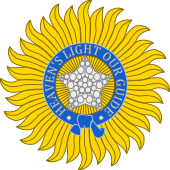This article includes a list of general references, but it lacks sufficient corresponding inline citations. (December 2019) |
| The Anarchical and Revolutionary Crimes Act, 1919 | |
|---|---|
 | |
| Imperial Legislative Council | |
| Repealed by | |
| The Special Laws Repeal Act, 1922 | |
| Status: Repealed |

The Anarchical and Revolutionary Crimes Act of 1919, popularly known as the Rowlatt Act, was a law, applied during the British India period. It was a legislative council act passed by the Imperial Legislative Council in Delhi on 18 March 1919, indefinitely extending the emergency measures of preventive indefinite detention, imprisonment without trial and judicial review enacted in the Defence of India Act 1915 during the First World War. It was enacted in the light of a perceived threat from revolutionary nationalists of re-engaging in similar conspiracies as had occurred during the war which the Government felt the lapse of the Defence of India Act would enable.[1][2][3]: 137 [4][5]
- ^ Popplewell, Richard (1995). Intelligence and Imperial Defence: British Intelligence and the Defence of the Indian Empire 1904–1924 (1st ed.). Routledge. p. 175. doi:10.4324/9781315037417. ISBN 978-0-7146-4580-3. S2CID 239566146.
- ^ Lovett, Verney (1920). A history of the Indian nationalist movement. London: John Murray. pp. 94, 187–191. Retrieved 12 March 2022.
- ^ Sarkar, Benoy Kumar (March 1921). "A History of the Indian Nationalist Movement. (Review by Verney Lovett)". Political Science Quarterly. 36 (1): 136–138. doi:10.2307/2142669. hdl:2027/coo1.ark:/13960/t3nw01g05. JSTOR 2142669.
- ^ Tinker, Hugh (October 1968). "India in the First World War and after". Journal of Contemporary History. 3 (4): 92. doi:10.1177/002200946800300407. S2CID 150456443.
- ^ Fisher, Margaret W. (Spring 1972). "Essays on Gandhian Politics: the Rowlatt Satyagraha of 1919. (in Book Reviews)". Pacific Affairs. 45 (1): 129. doi:10.2307/2755297. JSTOR 2755297. Retrieved 12 March 2022.